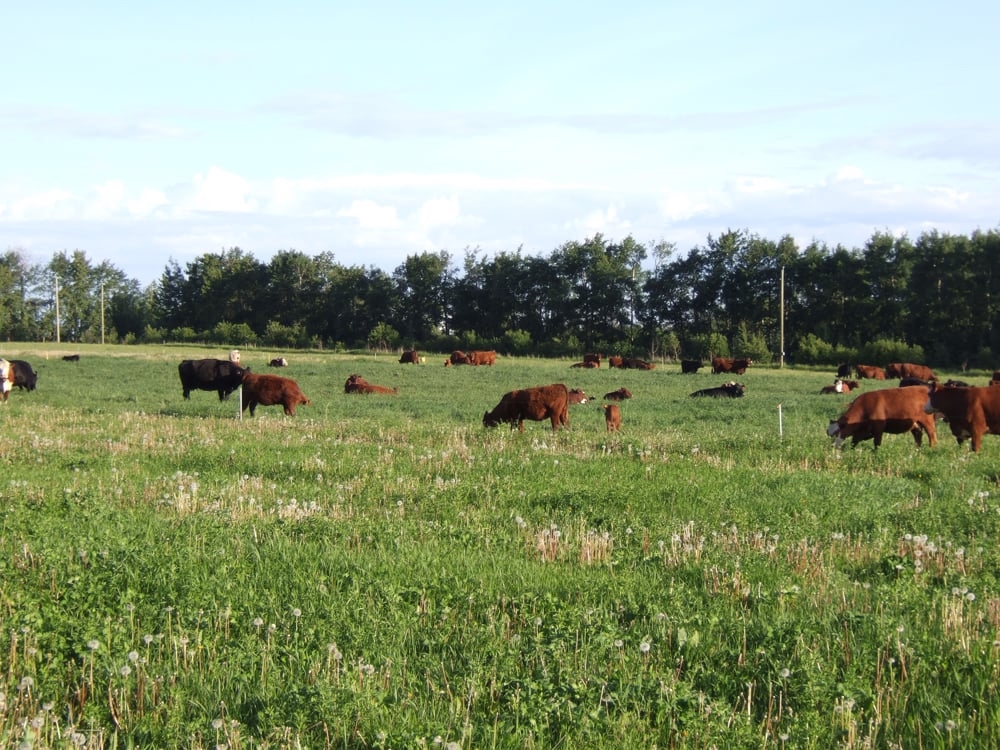Why post-drought pasture management matters for beef farmers
Knowing how perennial plants function can help producers make better decisions
| 4 min read

After years of drought, many are working to revitalize their pastures. Knowing the ins and outs of perennials can help. Photo: Grant Lastiwka
Pasture management is always important, but it is especially important following a drought. During these challenging periods, pastures may suffer and degrade, resulting in the loss of valuable forage, soil erosion and diminished fertility. Drought effects linger, affecting land and plant life productivity even after the rains return. Effective management strategies are essential to support rehabilitation, promote regrowth and prevent further deterioration.
“No two years are the same in grazing pastures, so we must look deeper than simply hoping for more rain,” says Renovo Seed advisor Grant Lastiwka. Farmers often “take an in-depth view” with cropland, he adds, but with forage and pasture, people often “blindly follow a history and view it as simply: ‘When are we going to turn the cows out?’ We should be interpreting what the land is telling us and thinking about it in new ways.”
Examining the larger story
Lastiwka likens pasture management to a bank account. To take stock, he recommends producers complete a rain check, realistically examining rainfall levels and groundwater status.
“Our perennials have a perennial story,” he says. “This story reflects on setting up next year’s productivity in the last stages of the previous year. Any shortfalls must be promptly addressed.”
The key to extensive vigour and health is to provide a fall window of opportunity to reset. Producers should try to not only gather information, but ask what it means, he says.
“Pasture management should be a 365-day grazing mentality.”
Monitor for early productivity
Lastiwka says periodic soil testing is important, because it helps create a benchmark for strategies to address the puzzle pieces of pasture management.
“Watch the plants, because they’re talking to us and among themselves. They communicate with other plants and soil organisms, and the beauty of this is a functioning ecosystem, the reason pastures green up every year. We want them to be coming with their best foot forward.”
Producers manage the relationship between cattle and other assets, such as water sources and shelter belts. In the same way, they can take advantage of the initial stages of growth as plants prepare for more rapid development.
In some years, this could mean supporting the plant’s ‘solar panel’ and waiting until plants reach the 3.5-leaf stage, yielding a panel of renewable, above-ground photosynthetic material. The vegetation tells us how healthy the plant is and how much operating loan is being paid off.
“In a perfect grazing world, we’d leave more material behind earlier in the year, so it regrows faster, coming back to be babies later in the year,” Lastiwka says. “We’re trying to shift the plant’s mentality from ‘Let’s grow up and put a seed head on like a wheat or barley crop’ to ‘Let’s grow greener babies.’ Shift them from a cycle of death to a cycle of life.”
As grasses tiller more or grow new shoots, ground cover and an improved ‘solar panel’ to capture sunlight energy, the growing and grazing seasons are extended. This means the soil organisms, forage and cattle are fed.
Proactivity brings improved results
Lastiwka says when a pasture is growing slowly, it’s because it has been grazed too much during its weak points, which causes it to move to a lower ecosystem functioning level. This means the plants are focused on protecting themselves, rather than producing. Grasses are perennials in an ever-adapting ecosystem, he adds, so it’s important to be proactive throughout the entire grazing cycle.
In today’s world, people want quick results. Assessing pasture management as a functioning ecosystem can be frustrating, as these results don’t take shape as quickly as we’d like. But later corrections are always an uphill battle.
“We’re trying to buy back some time, health, and vigour in the forage and soil. In Western Canada, we have cooler springs and a shorter growing season, so we want to manipulate it for a longer and more dynamic grazing period.”
Returning to the bank account comparison, livestock producers take out what they need and put back what the pasture needs, whether it’s fertilizer or time to increase leaf area. When a plant has a larger leaf area, it stores more sugars for the fall and establishes tillers for the next year. Lastiwka says these actions help improve the plant and the soil’s biology, which in turn helps meet the needs of the cattle and the producer.
He recommends assessing and recording what pastures support and the productivity they bring. If this drops, the problem must be addressed.
“Try to create a shorter grazing span when possible and always look at moving on. If we make a mistake, our reaction should be equal in the opposite measure… understanding plant systems reopens the door to possibilities in Western Canada’s short growing season climate.”


